Glossary
Plant Care Library
R
Rex Begonia
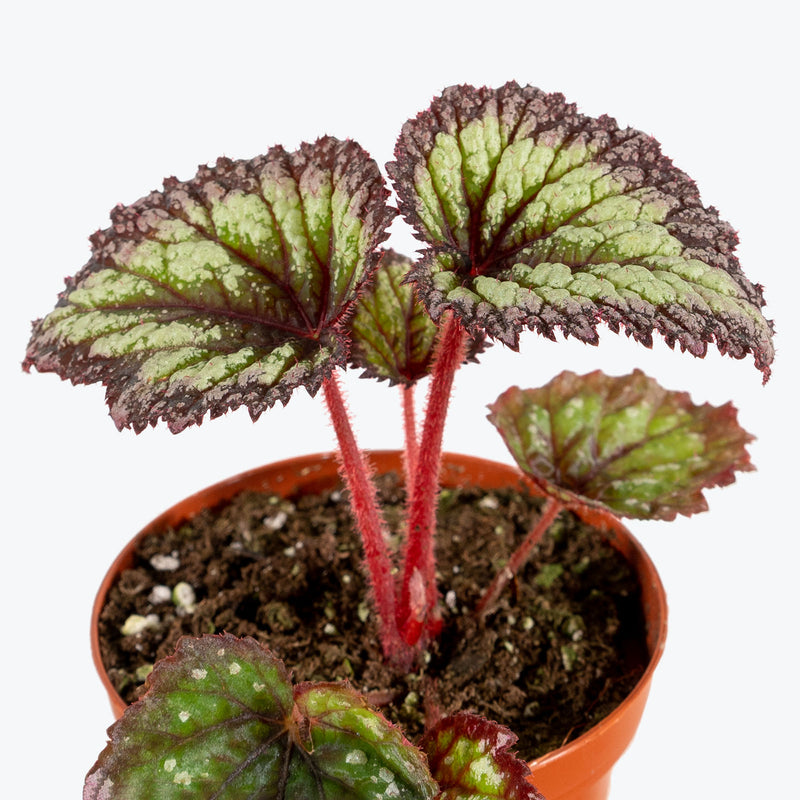
How to care for Rex Begonia
They should not be in a position to see the sun directly, as it is too intense for them. Filtered sunlight through a sheer curtain is fine and most homes are comprised primarily of indirect sunlight. The best spot for them is where they do not see the sun during the majority of the day but still get bright, indirect light.
They will do well in medium light, but will grow faster with brighter light. A good medium-light place in your home would be in the middle of a room that has a regular size window. Remember that plants will grow based on how much light they receive.
They need to be watered when the top half of the soil is dry to the touch. That usually takes about 1 week in an average home environment. It may vary depending on the time of year, your environment and lighting conditions, but it's always safer to underwater or give the soil a check before you water again.
They like a high humidity environment but do not like being misted, as this can cause powdery mildew. Instead, you can place them on a pebble tray or put them around a humidifier. Although they won't die if they don't receive enough humidity, their leaves may have some dry, crunchy, or yellow edges.
Do not mist the leaves, as this can lead to powdery mildew. Tap water often causes the edges of the leaves to burn, so use distilled or rain water instead! If you don't have access to this, leave some tap water to sit out for a few days so that the harmful chemicals can evaporate out. They also have very thin roots, so be careful not to let the plants sit in water as this will cause their roots to rot.
This plant is moderately toxic and can cause some adverse reactions when ingested so it is best to not let your pets eat it, which we advise for all plants in general. The severity of the reaction will depend on how much of the plant is ingested but, if you know your pet typically does not eat your plants, this plant will be suitable for your home..
View PlantRex Begonia Dark Mambo
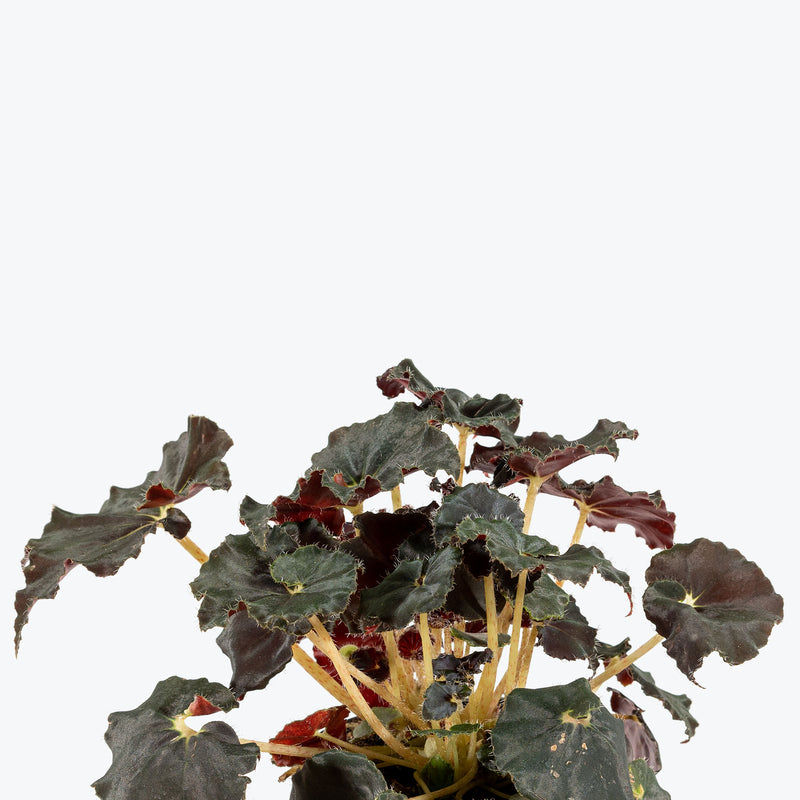
How to care for Rex Begonia Dark Mambo
They should not be in a position to see the sun directly, as it is too intense for them. Filtered sunlight through a sheer curtain is fine and most homes are comprised primarily of indirect sunlight. The best spot for them is where they do not see the sun during the majority of the day but still get bright, indirect light.
They will do well in medium light, but will grow faster with brighter light. A good medium-light place in your home would be in the middle of a room that has a regular size window. Remember that plants will grow based on how much light they receive.
They need to be watered when the top half of the soil is dry to the touch. That usually takes about 1 week in an average home environment. It may vary depending on the time of year, your environment and lighting conditions, but it's always safer to underwater or give the soil a check before you water again.
They like a high humidity environment but do not like being misted, as this can cause powdery mildew. Instead, you can place them on a pebble tray or put them around a humidifier. Although they won't die if they don't receive enough humidity, their leaves may have some dry, crunchy, or yellow edges.
Do not mist the leaves, as this can lead to powdery mildew. Tap water often causes the edges of the leaves to burn, so use distilled or rain water instead! If you don't have access to this, leave some tap water to sit out for a few days so that the harmful chemicals can evaporate out. They also have very thin roots, so be careful not to let the plants sit in water as this will cause their roots to rot.
This plant is moderately toxic and can cause some adverse reactions when ingested so it is best to not let your pets eat it, which we advise for all plants in general. The severity of the reaction will depend on how much of the plant is ingested but, if you know your pet typically does not eat your plants, this plant will be suitable for your home..
View PlantRex Begonia Red Kiss
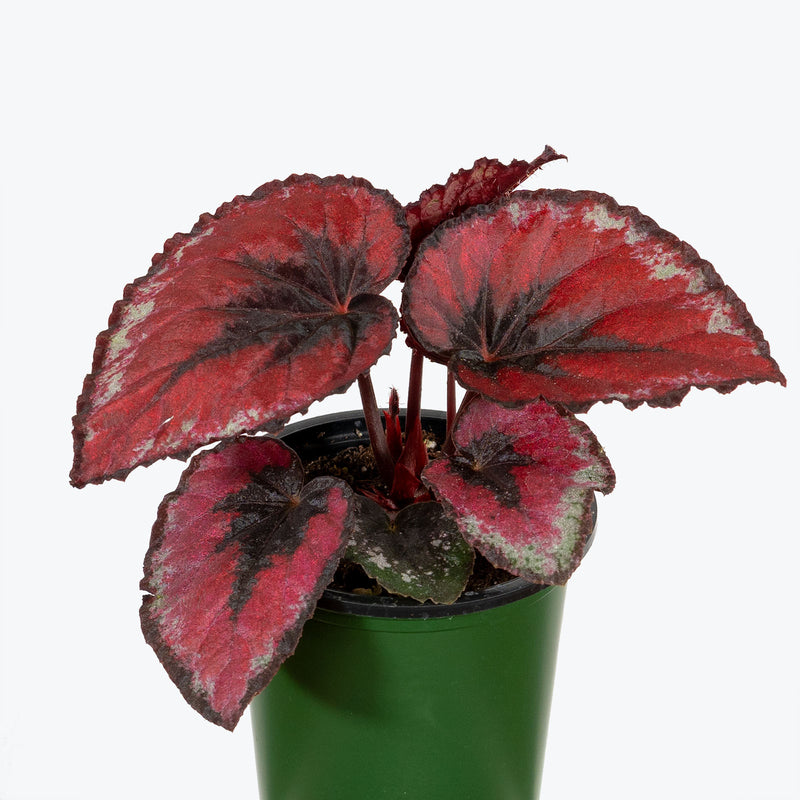
How to care for Rex Begonia Red Kiss
They should not be in a position to see the sun directly, as it is too intense for them. Filtered sunlight through a sheer curtain is fine and most homes are comprised primarily of indirect sunlight. The best spot for them is where they do not see the sun during the majority of the day but still get bright, indirect light.
They will do well in medium light, but will grow faster with brighter light. A good medium-light place in your home would be in the middle of a room that has a regular size window. Remember that plants will grow based on how much light they receive.
They need to be watered when the top half of the soil is dry to the touch. That usually takes about 1 week in an average home environment. It may vary depending on the time of year, your environment and lighting conditions, but it's always safer to underwater or give the soil a check before you water again.
They like a high humidity environment but do not like being misted, as this can cause powdery mildew. Instead, you can place them on a pebble tray or put them around a humidifier. Although they won't die if they don't receive enough humidity, their leaves may have some dry, crunchy, or yellow edges.
Do not mist the leaves, as this can lead to powdery mildew. They have very thin roots, so be careful not to let the plants sit in any excess water as this will often cause their roots to rot.
This plant is moderately toxic and can cause some adverse reactions when ingested so it is best to not let your pets eat it, which we advise for all plants in general. The severity of the reaction will depend on how much of the plant is ingested but, if you know your pet typically does not eat your plants, this plant will be suitable for your home..
View PlantRex Begonia Silver
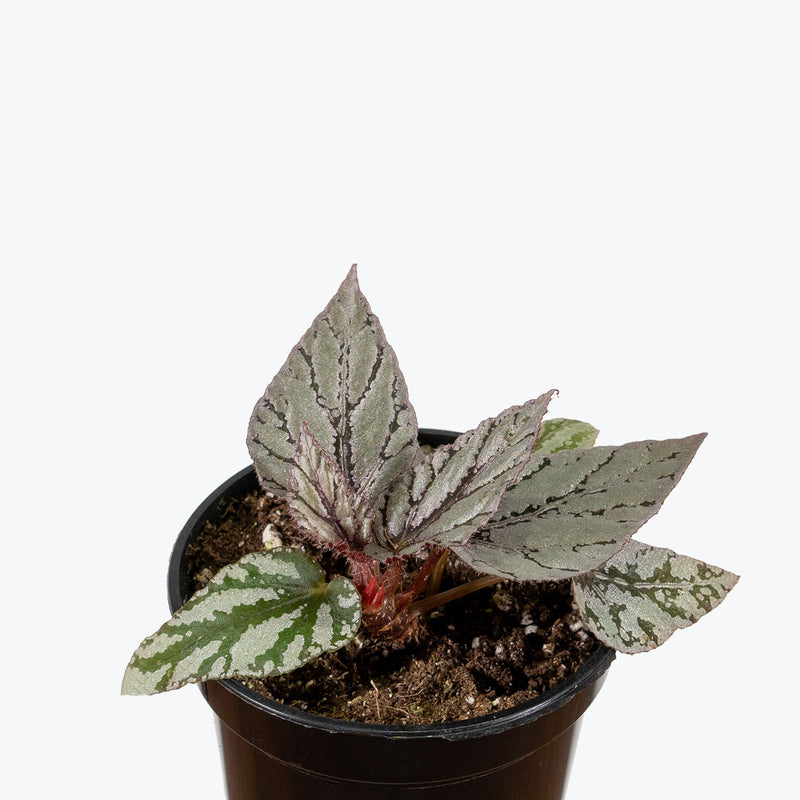
How to care for Rex Begonia Silver
They should not be in a position to see the sun directly, although early morning or late evening sun is fine. Filtered sunlight through a sheer curtain is best and most homes are comprised primarily of indirect sunlight. The best spot for them is where they do not see the sun during the majority of the day but still get bright, indirect light.
They will do well in medium light but will grow faster with brighter light. A good medium-light place in your home would be in the middle of a room that has a regular size window. Remember that plants will grow based on how much light they receive.
They need to be watered when the top half of the soil is dry to the touch. That usually takes about 1 week in an average home environment. It will vary depending on the time of year, your environment and lighting conditions, but it's always safer to underwater or give the soil a check before you water again. Expect to water more often in brighter light and less often in lower light.
They like a high humidity environment but do not like being misted, as this can cause powdery mildew. Instead, you can place them on a pebble tray or put them around a humidifier. Although they won't die if they don't receive enough humidity, their leaves may have some dry, crunchy, or yellow edges.
Do not mist the leaves, as this can lead to powdery mildew. They have very thin roots, so be careful not to let the plants sit in any excess water as this will often cause their roots to rot.
This plant is moderately toxic and can cause some adverse reactions when ingested so it is best to not let your pets eat it, which we advise for all plants in general. The severity of the reaction will depend on how much of the plant is ingested but, if you know your pet typically does not eat your plants, this plant will be suitable for your home..
View PlantRex Begonia Spitfire
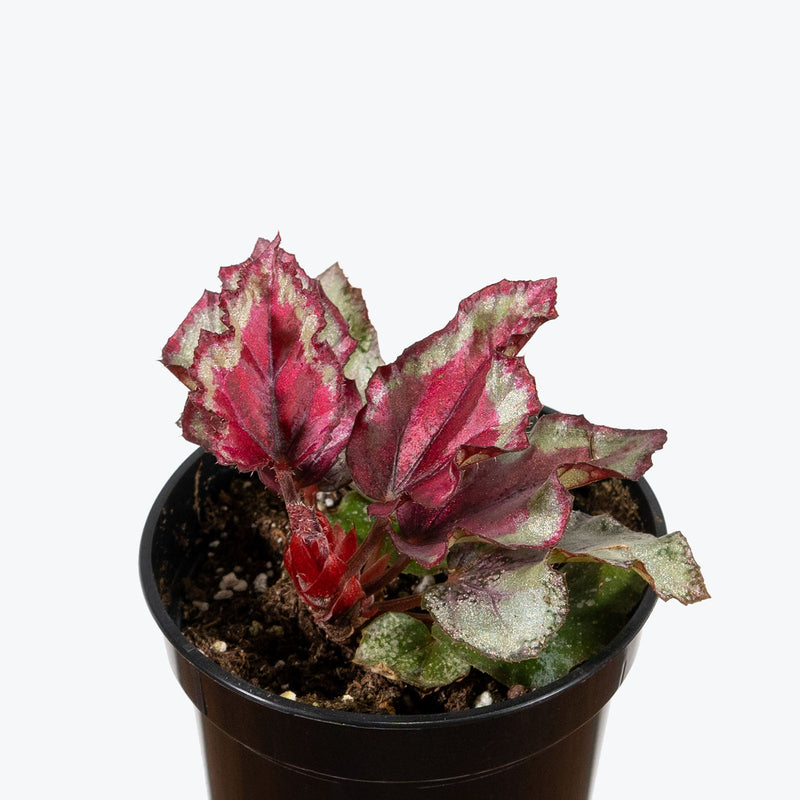
How to care for Rex Begonia Spitfire
They should not be in a position to see the sun directly, although early morning or late evening sun is fine. Filtered sunlight through a sheer curtain is best and most homes are comprised primarily of indirect sunlight. The best spot for them is where they do not see the sun during the majority of the day but still get bright, indirect light.
They will do well in medium light but will grow faster with brighter light. A good medium-light place in your home would be in the middle of a room that has a regular size window. Remember that plants will grow based on how much light they receive.
They need to be watered when the top half of the soil is dry to the touch. That usually takes about 1 week in an average home environment. It will vary depending on the time of year, your environment and lighting conditions, but it's always safer to underwater or give the soil a check before you water again. Expect to water more often in brighter light and less often in lower light.
They like a high humidity environment but do not like being misted, as this can cause powdery mildew. Instead, you can place them on a pebble tray or put them around a humidifier. Although they won't die if they don't receive enough humidity, their leaves may have some dry, crunchy, or yellow edges.
Do not mist the leaves, as this can lead to powdery mildew. They have very thin roots, so be careful not to let the plants sit in any excess water as this will often cause their roots to rot.
This plant is moderately toxic and can cause some adverse reactions when ingested so it is best to not let your pets eat it, which we advise for all plants in general. The severity of the reaction will depend on how much of the plant is ingested but, if you know your pet typically does not eat your plants, this plant will be suitable for your home..
View PlantRex Begonia Vine
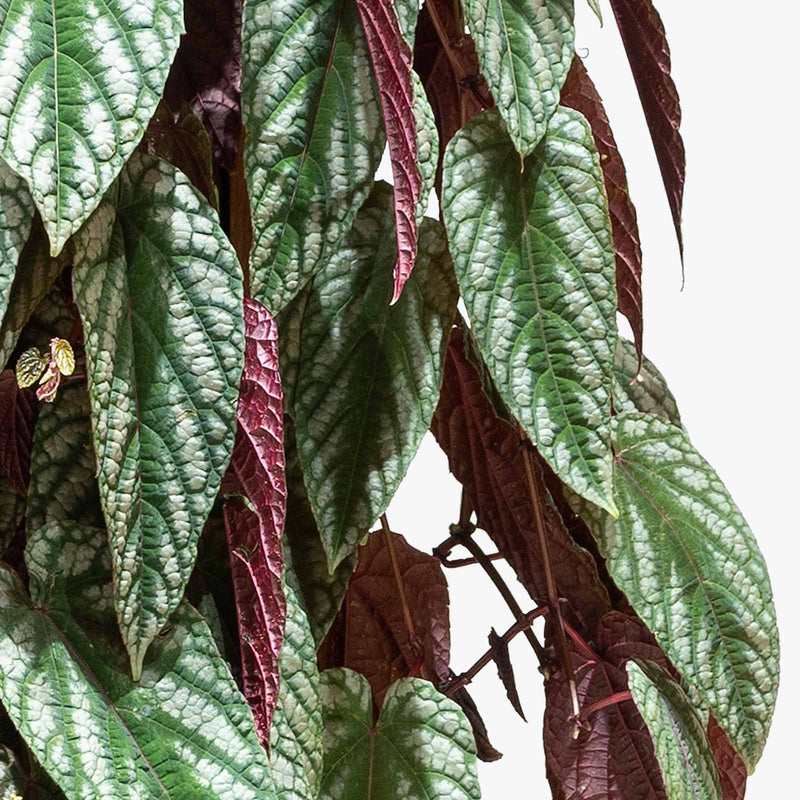
How to care for Rex Begonia Vine
They should not be in a position to see the sun directly, although early morning or late evening sun is fine. Filtered sunlight through a sheer curtain is best and most homes are comprised primarily of indirect sunlight. The best spot for them is where they do not see the sun during the majority of the day but still get bright, indirect light.
They will do best in bright light. A nice bright place inside your home would be on the window sill or a stool that is right next to a window, either with or without blinds, depending on if the plant can handle sun. Remember that plants will grow based on how much light they receive.
They need to be watered when the top half of the soil is dry to the touch. That usually takes about 1 week in an average home environment. It will vary depending on the time of year, your environment and lighting conditions, but it's always safer to underwater or give the soil a check before you water again. Expect to water more often in brighter light and less often in lower light.
They like a high humidity environment but do not like being misted, as this can cause powdery mildew. Instead, you can place them on a pebble tray or put them around a humidifier. Although they won't die if they don't receive enough humidity, their leaves may have some dry, crunchy, or yellow edges.
Although these beautiful plants can do well indoors in the winter, we recommend keeping them outside in lots of bright, indirect light for the warmer months! Keeping your plant in an East or South-facing window would be best but in the case of the South-facing window, be sure to bring the plant back a few feet so that it is not sitting in the direct, afternoon sunlight.
This plant is moderately toxic and can cause some adverse reactions when ingested so it is best to not let your pets eat it, which we advise for all plants in general. The severity of the reaction will depend on how much of the plant is ingested but, if you know your pet typically does not eat your plants, this plant will be suitable for your home..
View PlantRhaphidophora Decursiva
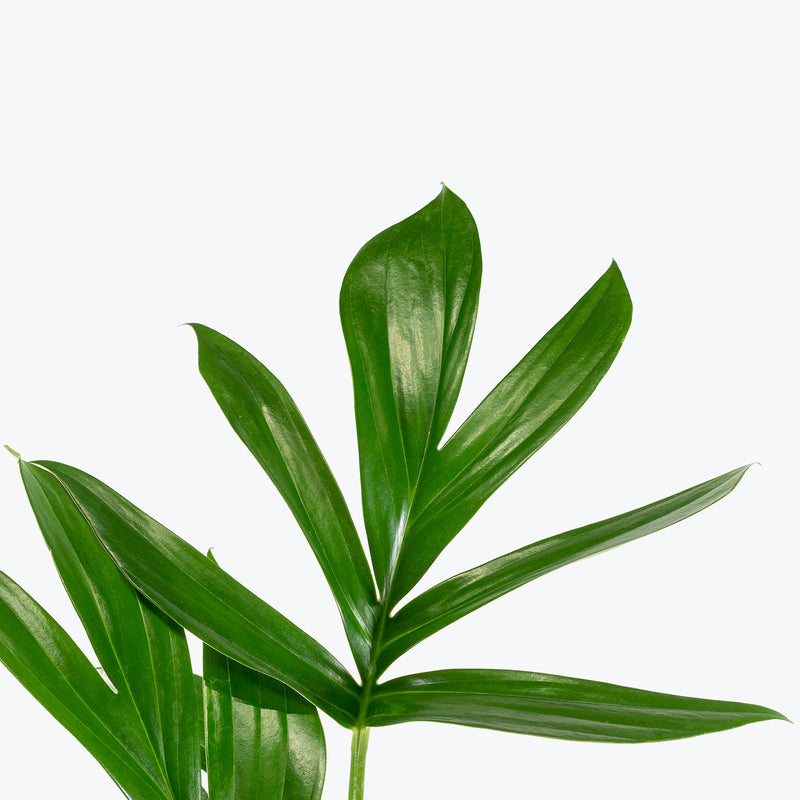
How to care for Rhaphidophora Decursiva
Rhaphidophora Decursiva should not be in a position to see the sun directly, although early morning or late evening sun is fine. Filtered sunlight through a sheer curtain is best and most homes are comprised primarily of indirect sunlight. The best spot for them is where they do not see the sun during the majority of the day but still get bright, indirect light.
Rhaphidophora Decursiva will do well in medium light but will grow faster with brighter light. A good medium-light place in your home would be in the middle of a room that has a regular size window. Remember that plants will grow based on how much light they receive.
Rhaphidophora Decursiva needs to be watered when the top half of the soil is dry to the touch. That usually takes about 1 week in an average home environment. It will vary depending on the time of year, your environment and lighting conditions, but it's always safer to underwater or give the soil a check before you water again. Expect to water more often in brighter light and less often in lower light.
Rhaphidophora Decursiva will do well in average humidity environments but will appreciate a little bit of humidity if provided, give them a mist daily or get a humidifier.
In the darker, shorter days of the winter months, let the soil of Rhaphidophora Decursiva mostly dry out, as too much moisture could lead to root rot, then increase your watering again in the warmer months.
Rhaphidophora Decursiva is moderately toxic and can cause some adverse reactions when ingested so it is best to not let your pets eat it, which we advise for all plants in general. The severity of the reaction will depend on how much of the plant is ingested but, if you know your pet typically does not eat your plants, this plant will be suitable for your home..
Learn MoreView PlantRhaphidophora Tetrasperma
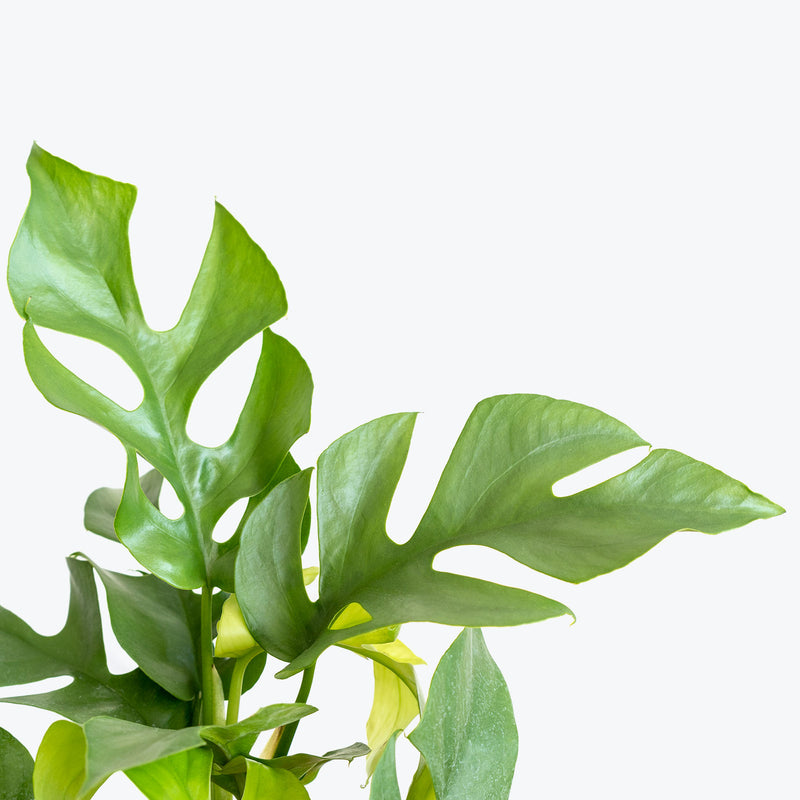
How to care for Rhaphidophora Tetrasperma
Rhaphidophora Tetrasperma should not be in a position to see the sun directly, as it is too intense for them. Filtered sunlight through a sheer curtain is fine and most homes are comprised primarily of indirect sunlight. The best spot for them is where they do not see the sun during the majority of the day but still get bright, indirect light.
Rhaphidophora Tetrasperma will thrive in bright light, but also can tolerate medium light. A good medium-light place in your home would be in the middle of a room that has a regular size window. They can be placed anywhere between the middle of the room and the window. Remember that plants will grow based on how much light they receive.
Rhaphidophora Tetrasperma needs to be watered when the top half of the soil is dry to the touch. That usually takes about 1 week in an average home environment. It may vary depending on the time of year, your environment and lighting conditions, but it's always safer to underwater or give the soil a check before you water again.
Rhaphidophora Tetrasperma can live in any average home humidity condition and are fairly hardy.
Rhaphidophora Tetrasperma is very easy to look after. If you want bigger leaves and faster growth, keep it in brighter light! Stabilizing it on a moss or bamboo pole will also aid in its growth. In spring and summer, it will appreciate a monthly feed with liquid fertilizer.
Rhaphidophora Tetrasperma is moderately toxic and can cause some adverse reactions when ingested so it is best to not let your pets eat it, which we advise for all plants in general. The severity of the reaction will depend on how much of the plant is ingested but, if you know your pet typically does not eat your plants, this plant will be suitable for your home..
Learn MoreView PlantRhapis Lady Palm
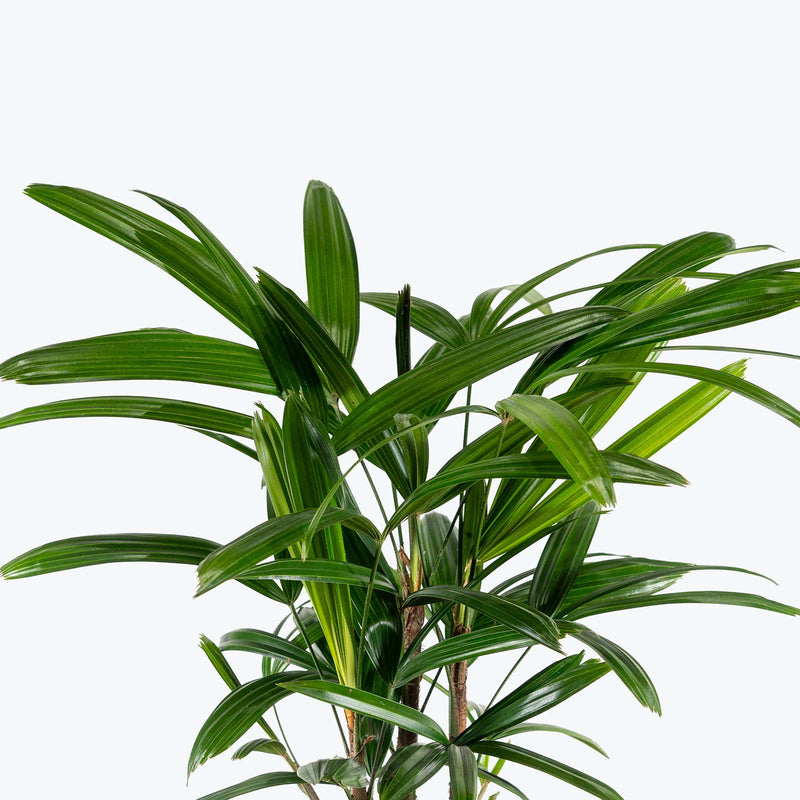
How to care for Rhapis Lady Palm
Rhapis Lady Palm enjoys some direct sun, but they'll also do well in bright, indirect light. It is best to place this plant somewhere where it will receive some nice morning sun, or a couple hours of afternoon sun, and then indirect light the rest of the day.
Rhapis Lady Palm will thrive in medium to bright light, but also can tolerate low light. A good medium-light place in your home would be in the middle of a room that has a regular size window. They can be placed almost anywhere in the room but remember, plants will grow based on how much light they receive.
Allow the top quarter of the soil to dry before watering Rhapis Lady Palm again. This usually takes about 3 - 4 days in an average home environment. It will vary depending on the time of year, your environment and lighting conditions. Expect to water more often in brighter light and less often in lower light.
Rhapis Lady Palm will do well in average humidity environments but will appreciate a little bit of humidity if provided, give them a mist daily or get a humidifier.
Rhapis Lady Palm doesn’t need a lot of pruning. Avoid removing fronds that have just a little browning (a fairly common sight on lady palms often due to inadequate water or light), as the plant still can use nutrients from those fronds. However, if an entire frond is discoloured or dead, you may prune it off. Clean the leaves with a damp cloth to remove dust and enhance the plant's appearance.
You can feel comfortable having Rhapis Lady Palm around your home in the potential case where your pet feels like nibbling on it. However, we typically recommend keeping your pets from eating any of your houseplants..
Learn MoreView PlantRhipsalis Cereuscula
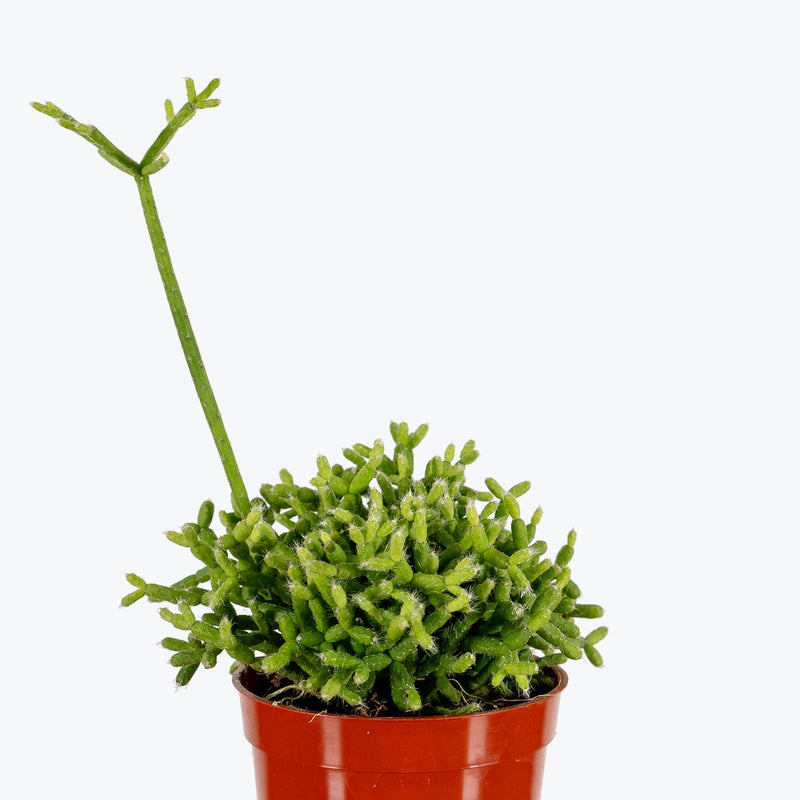
How to care for Rhipsalis Cereuscula
They enjoy some direct sun, but they'll also do well in bright, indirect light. It is best to place this plant somewhere where it will receive some nice morning sun, or a couple hours of late afternoon sun, and then indirect light the rest of the day.
They will thrive in bright light, but also can tolerate medium light. A good medium-light place in your home would be in the middle of a room that has a regular size window. They can be placed anywhere between the middle of the room and the window. Remember that plants will grow based on how much light they receive.
They like the soil to be relatively dry before the next watering. That usually takes about 2 weeks in an average home environment. It will vary depending on the time of year, your environment and lighting conditions, but for them, it's always safer to underwater or water when you see signs of lack of water (i.e. droopy, floppy, or soft leaves). Expect to water more often in brighter light and less often in lower light.
They will do well in average humidity environments but will appreciate a little bit of humidity if provided, give them a mist daily or get a humidifier.
Avoid subjecting your Rhipsalis to temperatures below 50°F (10°C). While it's tolerant of a range of conditions, sudden changes can cause stress. Due to its epiphytic nature, an aroid mix or a well-draining soil mix with organic matter can be beneficial. Fertilize sparingly; about once in the growing season with a diluted, balanced fertilizer should suffice.
You can feel comfortable having this plant around your home in the potential case where your pet feels like nibbling on it. However, we typically recommend keeping your pets from eating any of your houseplants..
View PlantRhipsalis Hatiora
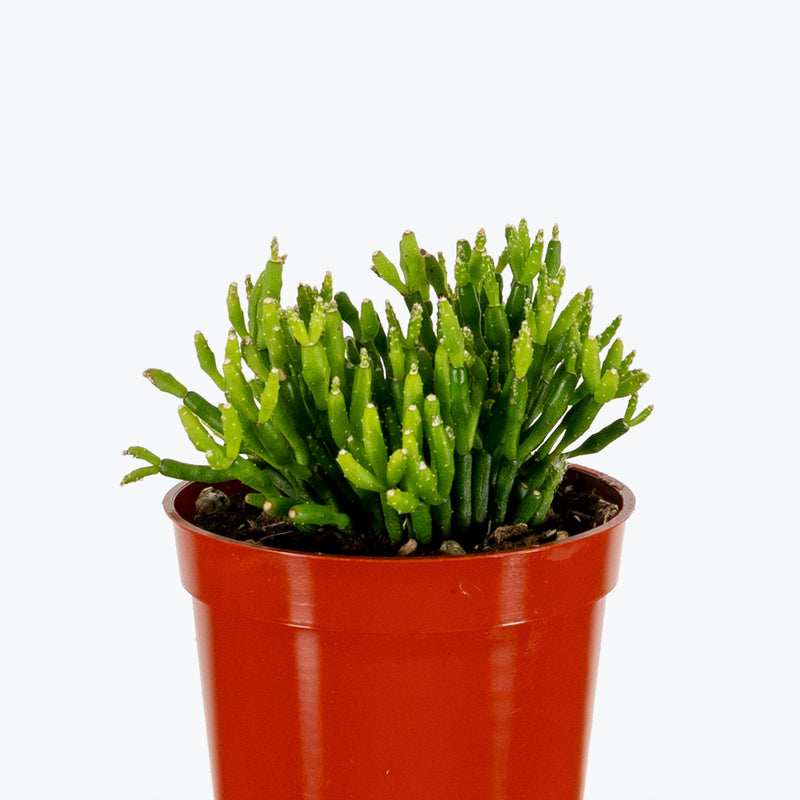
How to care for Rhipsalis Hatiora
They enjoy some direct sun, but they'll also do well in bright, indirect light. It is best to place this plant somewhere where it will receive some nice morning sun, or a couple hours of late afternoon sun, and then indirect light the rest of the day.
They will do best in bright light. A nice bright place inside your home would be on the window sill or a stool that is right next to a window, either with or without blinds, depending on if the plant can handle sun. Remember that plants will grow based on how much light they receive.
They like the soil to be relatively dry before the next watering. That usually takes about 2 weeks in an average home environment. It will vary depending on the time of year, your environment and lighting conditions, but for them, it's always safer to underwater or water when you see signs of lack of water (i.e. droopy, floppy, or soft leaves). Expect to water more often in brighter light and less often in lower light.
They will do well in average humidity environments but will appreciate a little bit of humidity if provided, give them a mist daily or get a humidifier.
Ensure the plant has a well-draining soil mix to prevent water-logging, which can cause root rot. Feed with a cactus or succulent fertilizer during the growing season for best growth.
You can feel comfortable having this plant around your home in the potential case where your pet feels like nibbling on it. However, we typically recommend keeping your pets from eating any of your houseplants..
View PlantRhipsalis Pilocarpa
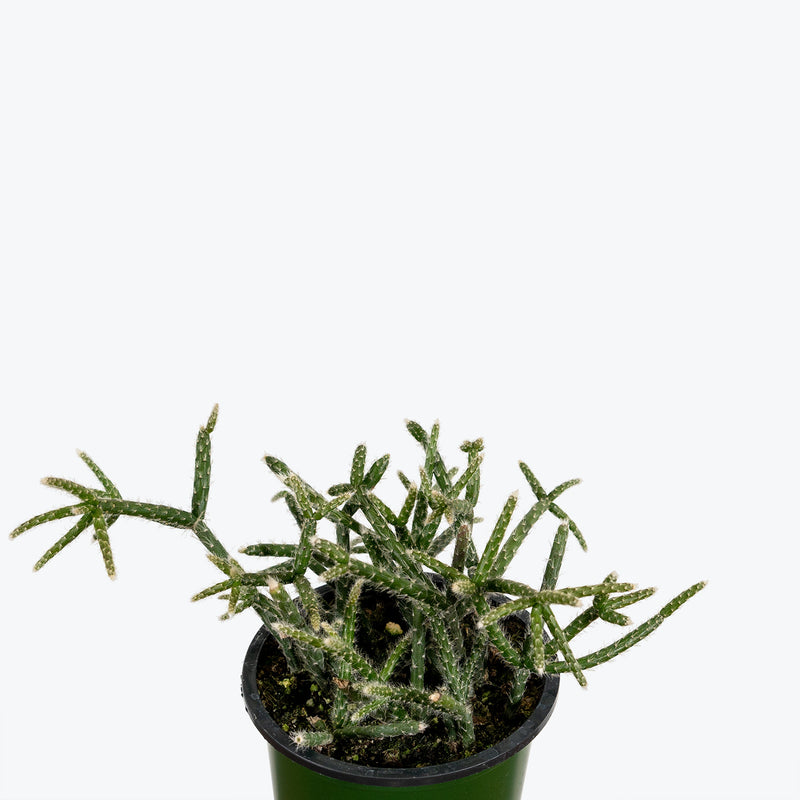
How to care for Rhipsalis Pilocarpa
They enjoy some direct sun, but they'll also do well in bright, indirect light. It is best to place this plant somewhere where it will receive some nice morning sun, or a couple hours of late afternoon sun, and then indirect light the rest of the day.
They will thrive in bright light, but also can tolerate medium light. A good medium-light place in your home would be in the middle of a room that has a regular size window. They can be placed anywhere between the middle of the room and the window. Remember that plants will grow based on how much light they receive.
They like the soil to be relatively dry before the next watering. That usually takes about 2 weeks in an average home environment. It will vary depending on the time of year, your environment and lighting conditions, but for them, it's always safer to underwater or water when you see signs of lack of water (i.e. droopy, floppy, or soft leaves). Expect to water more often in brighter light and less often in lower light.
They can live in any average home humidity condition and are fairly hardy.
Unlike most other succulents, this plant needs a rather consistent amount of water. Although they are slightly drought-tolerant, it is best to water when the soil feels dry about halfway down (when you stick your finger into the soil up to the second knuckle). They also can't handle strong afternoon sunlight, so a good place to keep your plant is where it can receive lots of direct morning sun and then partial shade in the afternoon, but still being about 20in away from the window.
You can feel comfortable having this plant around your home in the potential case where your pet feels like nibbling on it. However, we typically recommend keeping your pets from eating any of your houseplants..
View PlantRosemary Plant
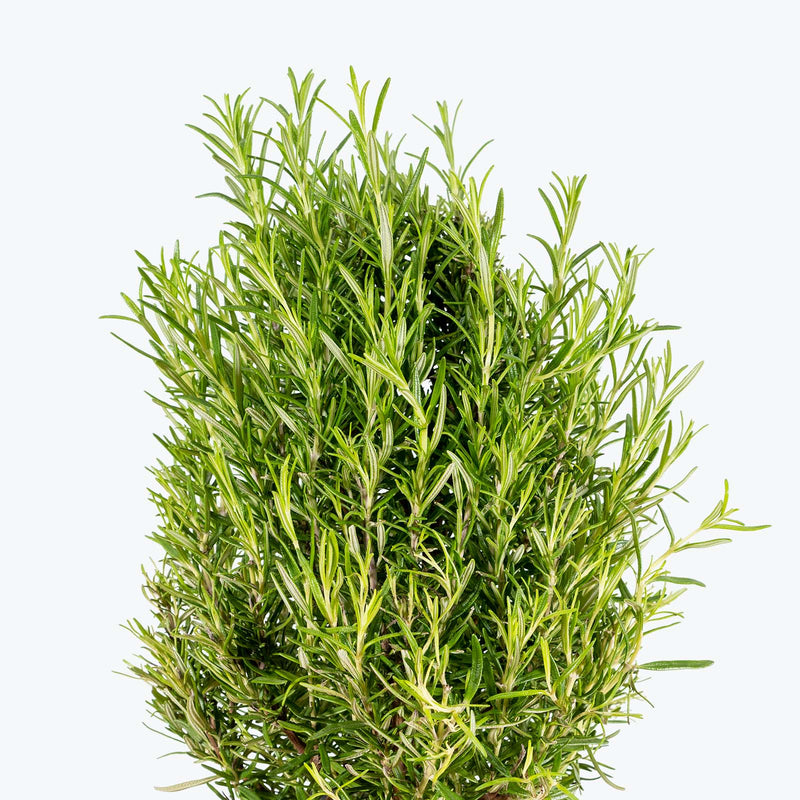
How to care for Rosemary Plant
They love as much sun as possible. The best spot for them is where they can see the sun during the majority of the day.
They will do best in bright light. A nice bright place inside your home would be on the window sill or a stool that is right next to a window, either with or without blinds, depending on if the plant can handle sun. Remember that plants will grow based on how much light they receive.
Allow the top quarter of the soil to dry before watering again. This usually takes about 3 - 4 days in an average home environment. It will vary depending on the time of year, your environment and lighting conditions. Expect to water more often in brighter light and less often in lower light.
They will do well in average humidity environments but will appreciate a little bit of humidity if provided, give them a mist daily or get a humidifier.
Rosemary is known as an "upside-down" plant, meaning it prefers to absorb its moisture through the air. Therefore, gently misting the plant every ten days or so can help fill the gap between waterings. It is best to water at the base of the plant rather than overhead, onto the foliage. To go along with that, good air circulation will prevent rosemary from developing powdery mildew and other fungal diseases. For the best light, rotate the pot each week so that all sides of the plant receive some direct sunlight.
You can feel comfortable having this plant around your home in the potential case where your pet feels like nibbling on it. However, we typically recommend keeping your pets from eating any of your houseplants..
View PlantRubber Plant
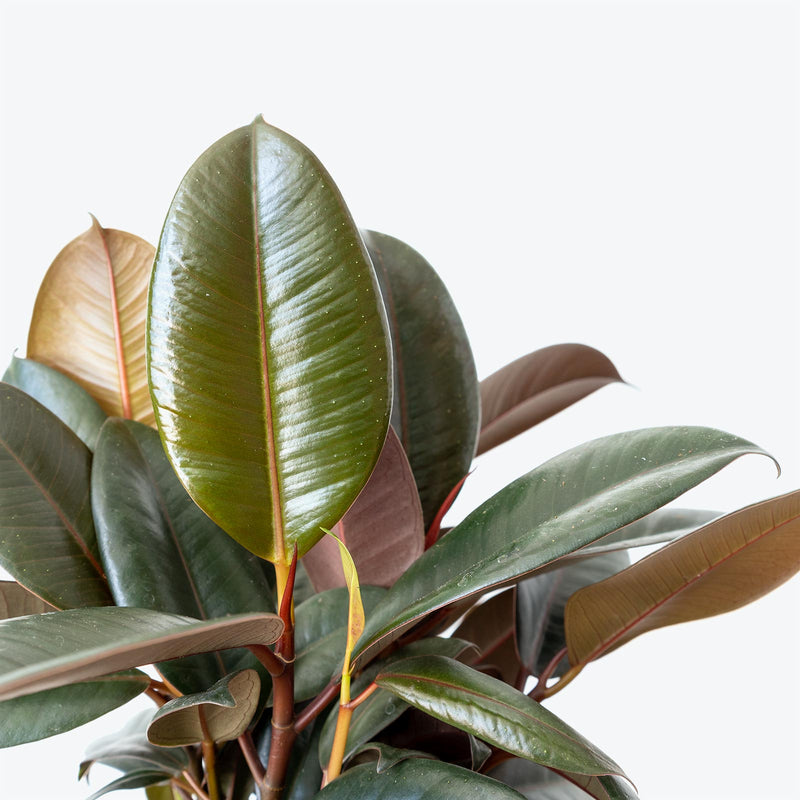
How to care for Rubber Plant
Rubber Plant should not be in a position to see the sun directly, although early morning or late evening sun is fine. Filtered sunlight through a sheer curtain is best and most homes are comprised primarily of indirect sunlight. The best spot for them is where they do not see the sun during the majority of the day but still get bright, indirect light.
Rubber Plant will do well in medium light but will grow faster with brighter light. A good medium-light place in your home would be in the middle of a room that has a regular size window. Remember that plants will grow based on how much light they receive.
Rubber Plant likes the soil to be relatively dry before the next watering. That usually takes about 2 weeks in an average home environment. It will vary depending on the time of year, your environment and lighting conditions, but for them, it's always safer to underwater or water when you see signs of lack of water (i.e. droopy, floppy, or soft leaves). Expect to water more often in brighter light and less often in lower light.
Rubber Plant can live in any average home humidity condition and are fairly hardy.
Rubber Plant are very easy to take care of, the secret is do not overwatering them and pay attention to abnormal signs like curling or falling leaves. Also ensure they are receiving adequate light. Water more frequently during warmer months and fertilize during growth.
Rubber Plant is moderately toxic and can cause some adverse reactions when ingested so it is best to not let your pets eat it, which we advise for all plants in general. The severity of the reaction will depend on how much of the plant is ingested but, if you know your pet typically does not eat your plants, this plant will be suitable for your home..
Learn MoreView PlantRubber Plant Melany
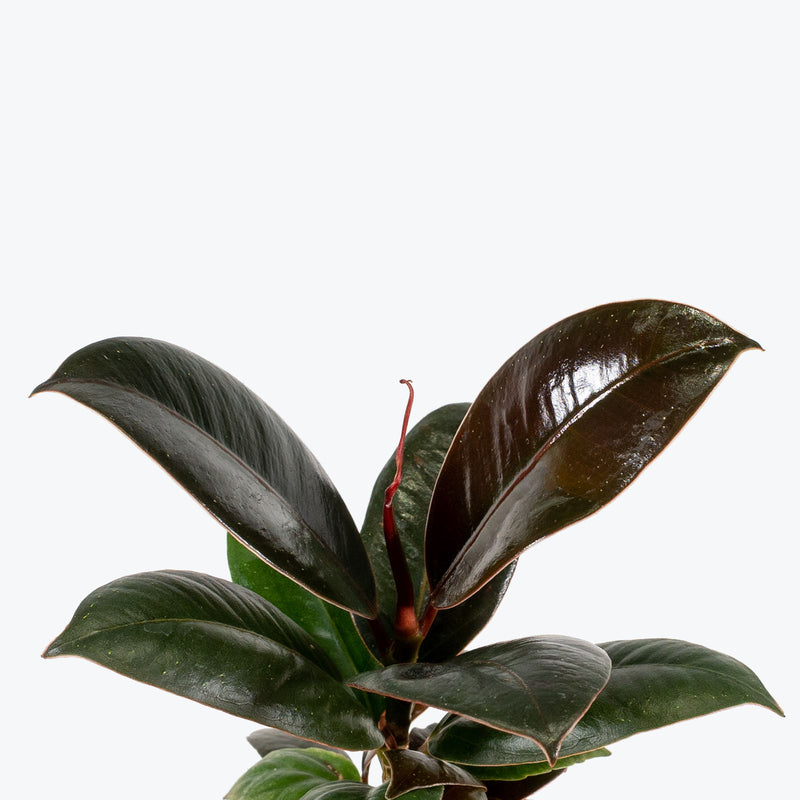
How to care for Rubber Plant Melany
They should not be in a position to the see the sun directly, as it is too intense for them. Filtered sunlight through a sheer curtain is fine and most homes are comprised primarily of indirect sunlight. The best spot for them is where they do not see the sun during the majority of the day but still get bright, indirect light.
They will do well in medium light but will grow faster with brighter light. A good medium-light place in your home would be in the middle of a room that has a regular size window. Remember that plants will grow based on how much light they receive.
They like the soil to be relatively dry before the next watering. That usually takes about two weeks in an average home environment. It may vary depending on the time of year, your environment and lighting conditions, but for them, it's always safer to underwater or water when you see signs of lack of water (i.e. droopy, floppy, or soft leaves). Water more often in the warmer months!
They can live in any average home humidity condition and are fairly hardy. Try to avoid letting water sit on their leaves for too long as this can lead to rot.
They are very easy to take care of, the secret is do not overwatering them and pay attention to abnormal signs like curling or falling leaves. Also ensure they are receiving adequate light. Water more frequently during warmer months and fertilize during growth.
This plant is moderately toxic and can cause some adverse reactions when ingested so it is best to not let your pets eat it, which we advise for all plants in general. The severity of the reaction will depend on how much of the plant is ingested but, if you know your pet typically does not eat your plants, this plant will be suitable for your home..
Learn MoreView PlantRubber Plant Robusta
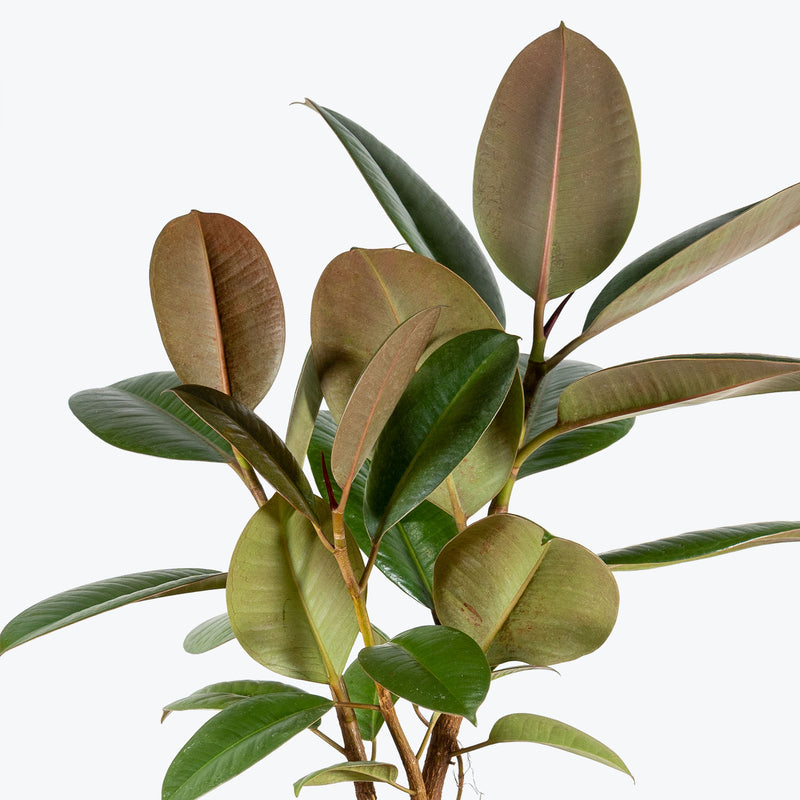
How to care for Rubber Plant Robusta
Rubber Plant Robusta should not be in a position to see the sun directly, although early morning or late evening sun is fine. Filtered sunlight through a sheer curtain is best and most homes are comprised primarily of indirect sunlight. The best spot for them is where they do not see the sun during the majority of the day but still get bright, indirect light.
Rubber Plant Robusta will do well in medium light but will grow faster with brighter light. A good medium-light place in your home would be in the middle of a room that has a regular size window. Remember that plants will grow based on how much light they receive.
Rubber Plant Robusta likes the soil to be relatively dry before the next watering. That usually takes about 2 weeks in an average home environment. It will vary depending on the time of year, your environment and lighting conditions, but for them, it's always safer to underwater or water when you see signs of lack of water (i.e. droopy, floppy, or soft leaves). Expect to water more often in brighter light and less often in lower light.
Rubber Plant Robusta can live in any average home humidity condition and is fairly hardy.
Taking care of Rubber Plant Robusta is easy. Just don't overwater and watch for signs of distress, such as curling or falling leaves. Additionally, ensure they are getting enough light. Increase watering frequency in warmer months, and fertilize during the growth period. Clean the leaves occasionally with a damp cloth to remove dust and help the plant efficiently photosynthesize. Prune as needed to shape the plant and encourage bushier growth.
Rubber Plant Robusta is moderately toxic and can cause some adverse reactions when ingested so it is best to not let your pets eat it, which we advise for all plants in general. The severity of the reaction will depend on how much of the plant is ingested but, if you know your pet typically does not eat your plants, this plant will be suitable for your home..
Learn MoreView PlantRubber Plant Sophia
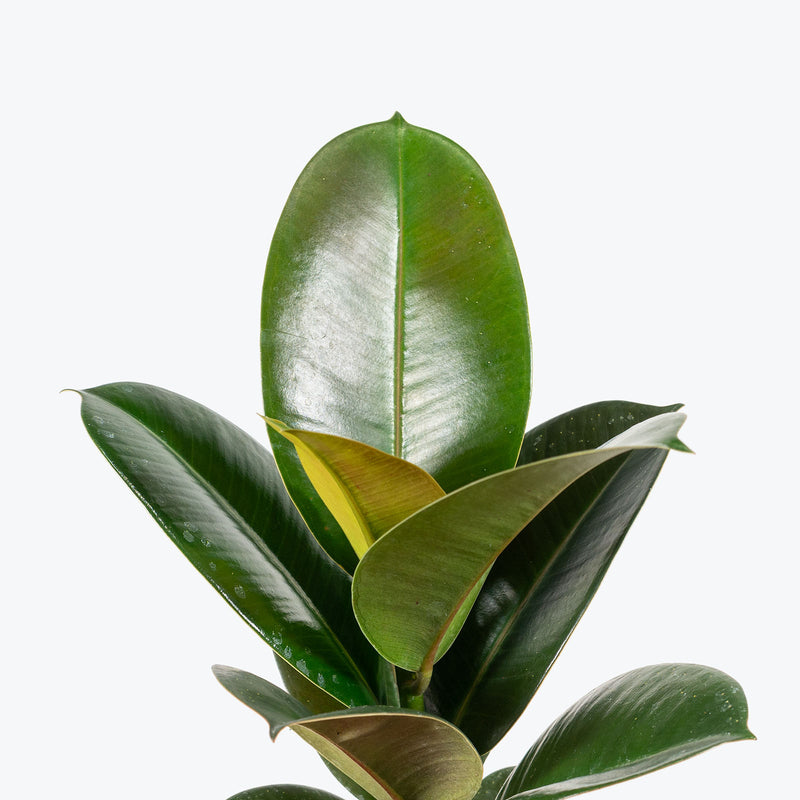
How to care for Rubber Plant Sophia
Rubber Plant Sophia should not be in a position to see the sun directly, although early morning or late evening sun is fine. Filtered sunlight through a sheer curtain is best and most homes are comprised primarily of indirect sunlight. The best spot for them is where they do not see the sun during the majority of the day but still get bright, indirect light.
Rubber Plant Sophia will do well in medium light but will grow faster with brighter light. A good medium-light place in your home would be in the middle of a room that has a regular size window. Remember that plants will grow based on how much light they receive.
Rubber Plant Sophia likes the soil to be relatively dry before the next watering. That usually takes about 2 weeks in an average home environment. It will vary depending on the time of year, your environment and lighting conditions, but for them, it's always safer to underwater or water when you see signs of lack of water (i.e. droopy, floppy, or soft leaves). Expect to water more often in brighter light and less often in lower light.
Rubber Plant Sophia can live in any average home humidity condition and is fairly hardy.
Taking care of Rubber Plant Sophia is easy. Just don't over water and watch for signs of distress, such as curling or falling leaves. Additionally, ensure they are getting enough light. Fertilize every 4-6 weeks during the growing season with a balanced liquid fertilizer diluted to half strength. During the winter, reduce fertilization as the plant's growth naturally slows down. Clean the leaves occasionally with a damp cloth to remove dust and enhance the plant’s ability to photosynthesize efficiently.
Rubber Plant Sophia is moderately toxic and can cause some adverse reactions when ingested so it is best to not let your pets eat it, which we advise for all plants in general. The severity of the reaction will depend on how much of the plant is ingested but, if you know your pet typically does not eat your plants, this plant will be suitable for your home..
Learn MoreView PlantRubber Plant Tineke
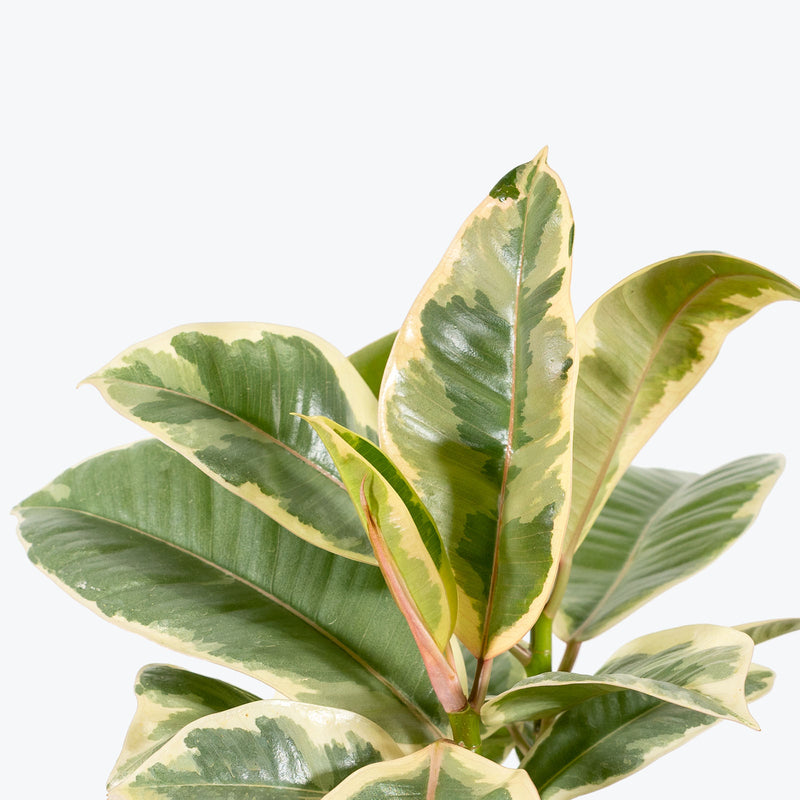
How to care for Rubber Plant Tineke
Rubber Plant Tineke should not be in a position to the see the sun directly, as it is too intense for them. Filtered sunlight through a sheer curtain is fine and most homes are comprised primarily of indirect sunlight. The best spot for them is where they do not see the sun during the majority of the day but still get bright, indirect light.
Rubber Plant Tineke will thrive in bright light, but also can tolerate medium light. A good medium-light place in your home would be in the middle of a room that has a regular size window. They can be placed anywhere between the middle of the room and the window. Remember that plants will grow based on how much light they receive.
Rubber Plant Tineke likes the soil to be relatively dry before the next watering. That usually takes about two weeks in an average home environment. It may vary depending on the time of year, your environment and lighting conditions, but for them, it's always safer to underwater or water when you see signs of lack of water (i.e. droopy, floppy, or soft leaves). Water more often in the warmer months.
Rubber Plant Tineke can live in any average home humidity condition and are fairly hardy. Try to avoid letting water sit on their leaves for too long as this can lead to rot.
Rubber Plant Tineke is very easy to take care of, the secret is to not overwater them and pay attention to abnormal signs like curling or falling leaves. Also, ensure they are receiving adequate light. Water more frequently during warmer months and fertilize during growth.
Rubber Plant Tineke is moderately toxic and can cause some adverse reactions when ingested so it is best to not let your pets eat it, which we advise for all plants in general. The severity of the reaction will depend on how much of the plant is ingested but, if you know your pet typically does not eat your plants, this plant will be suitable for your home..
Learn MoreView PlantRubber Ruby Red
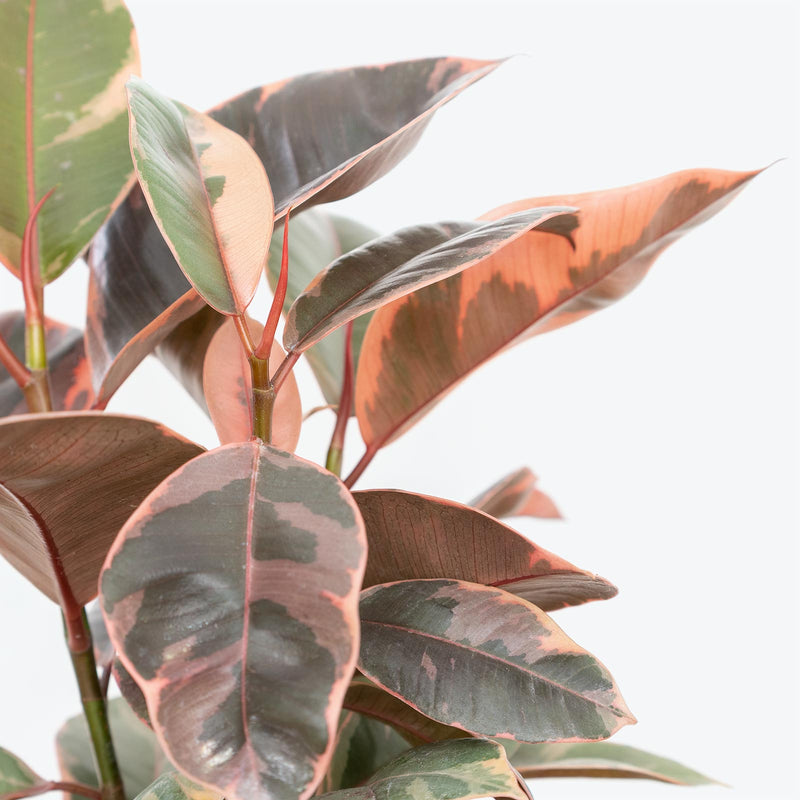
How to care for Rubber Ruby Red
They should not be in a position to see the sun directly, as it is too intense for them. Filtered sunlight through a sheer curtain is fine and most homes are comprised primarily of indirect sunlight. The best spot for them is where they do not see the sun during the majority of the day but still get bright, indirect light.
They will thrive in bright light, but also can tolerate medium light. A good medium-light place in your home would be in the middle of a room that has a regular size window. They can be placed anywhere between the middle of the room and the window. Remember that plants will grow based on how much light they receive.
They like the soil to be relatively dry before the next watering. That usually takes about two weeks in an average home environment. It may vary depending on the time of year, your environment and lighting conditions, but for them, it's always safer to underwater or water when you see signs of lack of water (i.e. droopy, floppy, or soft leaves). Water more often in the warmer months.
They can live in any average home humidity condition and are fairly hardy. Try to avoid letting water sit on their leaves for too long as this can lead to rot.
They are very easy to take care of, the secret is to not overwater them and pay attention to abnormal signs like curling or falling leaves. Also, ensure they are receiving adequate light. Water more frequently during warmer months and fertilize during growth.
This plant is moderately toxic and can cause some adverse reactions when ingested so it is best to not let your pets eat it, which we advise for all plants in general. The severity of the reaction will depend on how much of the plant is ingested but, if you know your pet typically does not eat your plants, this plant will be suitable for your home..
Learn MoreView Plant



